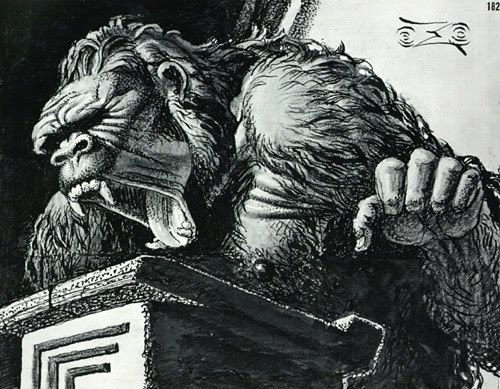Once upon a time, on New Year’s Eve, three men sit in a
dilapidated cemetery passing a bottle of cheap liquor back and forth while
talking about a local legend: that of
Death’s Driver. According to the
prevailing myth, the last person killed on New Year’s Eve must take over the
reins of a horse-drawn carriage fashioned by Death himself. For the next year, that person must serve
Death by collecting the souls of the recently deceased until the following New
Year’s Eve. Inevitably (at least
according to the logic of fairy tales), our protagonist, an alcoholic ne’er-do-well
named David Holm (played by the film’s director, Victor Sjöström), is
accidentally murdered just before the stroke of midnight. Then comes Death’s Driver, who just so
happens to be a fellow derelict named Georges (Tore Svennberg), the man who
first told Holm about the legend. Georges
died exactly a year before in Holm’s presence under very similar
circumstances. (As in all fairy tales,
coincidence and fate play a crucial role in this film.) Georges removes Holm from his physical body, binds his
astral body hand and foot with rope, and leads him on a soul-searing journey
through the world of the living, forcing Holm to confront the consequences of
his misspent life in a sermonizing manner that might remind one of Charles
Dickens’ A Christmas Carol (1843),
but The Phantom Carriage lacks all of
the sentimentalism so integral to Dickens’ far more famous novel.
I’ve recently completed a rather lengthy article about this
film for a forthcoming anthology about Expressionism edited by film scholar
Gary D. Rhodes for Edinburgh University Press.
The article, nearly 10,000 words long, is entitled “Here Among the Dead:
The Phantom Carriage and the
Cinema of the Occulted Taboo." When I learn more details about the publication
date of the anthology, I’ll be sure to pass it along. In the meantime, get your hands on the digitally
restored Blu-ray/DVD of The Phantom
Carriage, released by Criterion in the Fall of 2011, and watch Sjöström’s
groundbreaking phantasmagoria as the clock strikes twelve….






